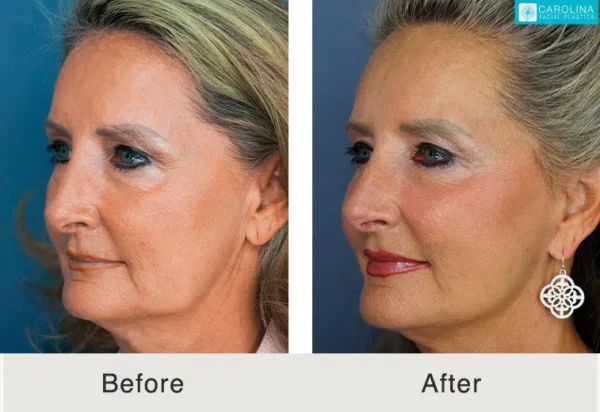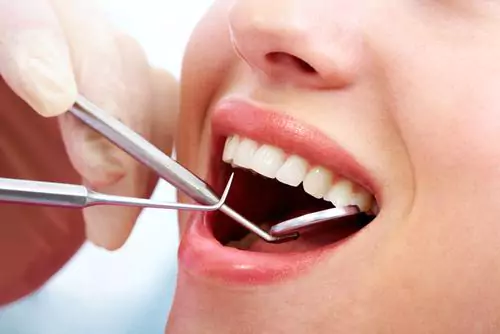Unveiling the Journey: A Day-by-Day Guide to Neck Lift and Lower Facelift Recovery
The prospect of a neck lift and lower facelift, designed to rejuvenate the jawline, tighten neck muscles, and address signs of aging, can be exciting. However, the recovery process is crucial for achieving optimal results and minimizing discomfort. This comprehensive guide provides a day-by-day breakdown of what to expect after surgery, along with helpful tips to navigate the healing journey.
Understanding the Recovery Timeline
While individual experiences may vary, here’s a general timeline for neck lift and lower facelift recovery:
-
Day 1: Following surgery, you’ll likely experience swelling, bruising, and discomfort around the surgical sites. Your face will be bandaged, and you might have drainage tubes to collect excess fluids. Rest and pain medication prescribed by your surgeon are crucial.
-
Days 2-3: Swelling and discomfort might peak during this time. You can expect your first post-operative appointment for bandage removal and drainage tube management. Gentle cleaning of the incisions will be instructed.
-
Days 4-7: Swelling and bruising will gradually subside. You might be able to wear a compression garment to minimize swelling. Pain medication requirements should decrease.
-
Weeks 2-4: Swelling and bruising will continue to improve. You can likely resume most daily activities, but strenuous exercise should be avoided. Numbness around the surgical sites is common and will gradually diminish.
-
Weeks 4-8: Most of the swelling and bruising should be resolved by now. You’ll likely experience significant improvement in your appearance, although some subtle refinements might continue over the next few months.
-
Beyond 8 Weeks: You can expect continued improvement and a more natural-looking outcome as swelling fully resolves and tissues settle.
A Day-by-Day Look at Recovery
Here’s a closer look at what you might experience day by day:
- Day 1: Expect to rest comfortably at the surgical facility or at home under close supervision.
- Day 2: You might feel more comfortable returning home but continue to prioritize rest and pain management.
- Day 3: Your first post-operative appointment allows your surgeon to assess healing and remove bandages and drainage tubes.
- Days 4-7: Swelling and bruising might peak, but pain medication should offer relief. Maintain a soft diet and avoid strenuous activity.
- Days 8-10: Swelling and bruising start to subside, and you might be able to wear makeup to camouflage any remaining discoloration.
- Weeks 2-4: Numbness might persist, but overall discomfort should decrease. Light exercise can be resumed with your doctor’s approval.
- Weeks 4-8: Most swelling should be gone, revealing a more defined jawline and tighter neck. Stitches will likely have dissolved or been removed.
- Beyond 8 Weeks: Enjoy the continued improvement in your appearance as the final refinements take place.
Essential Tips for Optimal Recovery
Here are some key tips to promote a smooth and comfortable recovery:
- Rest and Elevation: Prioritize rest during the first few days, keeping your head elevated to minimize swelling.
- Pain Management: Take prescribed pain medication as directed by your surgeon.
- Cold Therapy: Applying cold compresses to the surgical sites can help reduce swelling and discomfort.
- Diet: Stick to a soft diet during the initial days, gradually transitioning to regular foods as tolerated.
- Oral Hygiene: Maintain gentle oral hygiene with a soft-bristled toothbrush and saltwater rinses as instructed by your surgeon.
- Compression Garment: Wearing a compression garment as directed by your surgeon can help reduce swelling and promote healing.
- Activity Restrictions: Avoid strenuous activity for the first few weeks to allow for proper healing.
- Sun Protection: Protect your healing skin from the sun by wearing a wide-brimmed hat and using sunscreen with SPF 30 or higher.
- Follow-up Appointments: Attend all scheduled follow-up appointments with your surgeon to monitor healing and address any concerns.
Realistic Expectations
Remember, everyone heals at their own pace. While this guide provides a general timeline, your recovery might progress slightly faster or slower. Be patient with yourself and focus on following your surgeon’s instructions for optimal results.
FAQ on Neck Lift and Lower Facelift Recovery
Q: Can I see pictures of what recovery looks like day by day?
Unfortunately, due to ethical considerations and the variability of individual healing, it’s not recommended to share graphic images of recovery online. However, consulting with a board-certified plastic surgeon can be helpful. They can share realistic before-and-after photos specific to their practice and provide guidance on what to expect for your unique case.
Q: How much pain can I expect after surgery?
Pain tolerance varies from person to person. Most patients experience some degree of discomfort and swelling after surgery, which can be managed with prescription pain medication. Your surgeon will discuss pain management options with you during your consultation.
Q: Will I need to take time off work?
The amount of time needed for recovery and returning to work depends on your occupation and the extent of the surgery. Typically, 1-2 weeks of downtime is recommended. Discuss this with your surgeon during your consultation to plan accordingly.
Q: What are the risks associated with neck lift and lower facelift surgery?
As with any surgery, there are potential risks associated with neck lift and lower facelift procedures. These can include bleeding, infection, scarring, asymmetry, nerve damage, and temporary numbness. A board-certified plastic surgeon will discuss these risks in detail during your consultation and ensure you understand the potential benefits and drawbacks before proceeding.
Q: What are the long-term results of a neck lift and lower facelift?
Neck lift and lower facelift surgery can provide long-lasting results, typically lasting 10-15 years. However, the aging process continues, and sun exposure and lifestyle factors can influence how long the results last. Maintaining a healthy lifestyle and sun protection can help maximize the longevity of your results.
Q: When will I see the final results of my surgery?
Significant improvement will be noticeable within the first few weeks as swelling subsides. However, it can take up to 6 months for the final refinements to occur as tissues settle and the full effects of the surgery become evident.
Q: Is neck lift and lower facelift surgery right for me?
The decision to undergo neck lift and lower facelift surgery is a personal one. Ideal candidates are in good overall health, have realistic expectations, and are bothered by visible signs of aging in the jawline and neck. Consulting with a board-certified plastic surgeon is crucial to determine if this surgery is the right choice for you. They can assess your individual needs, discuss your goals, and create a personalized treatment plan.




